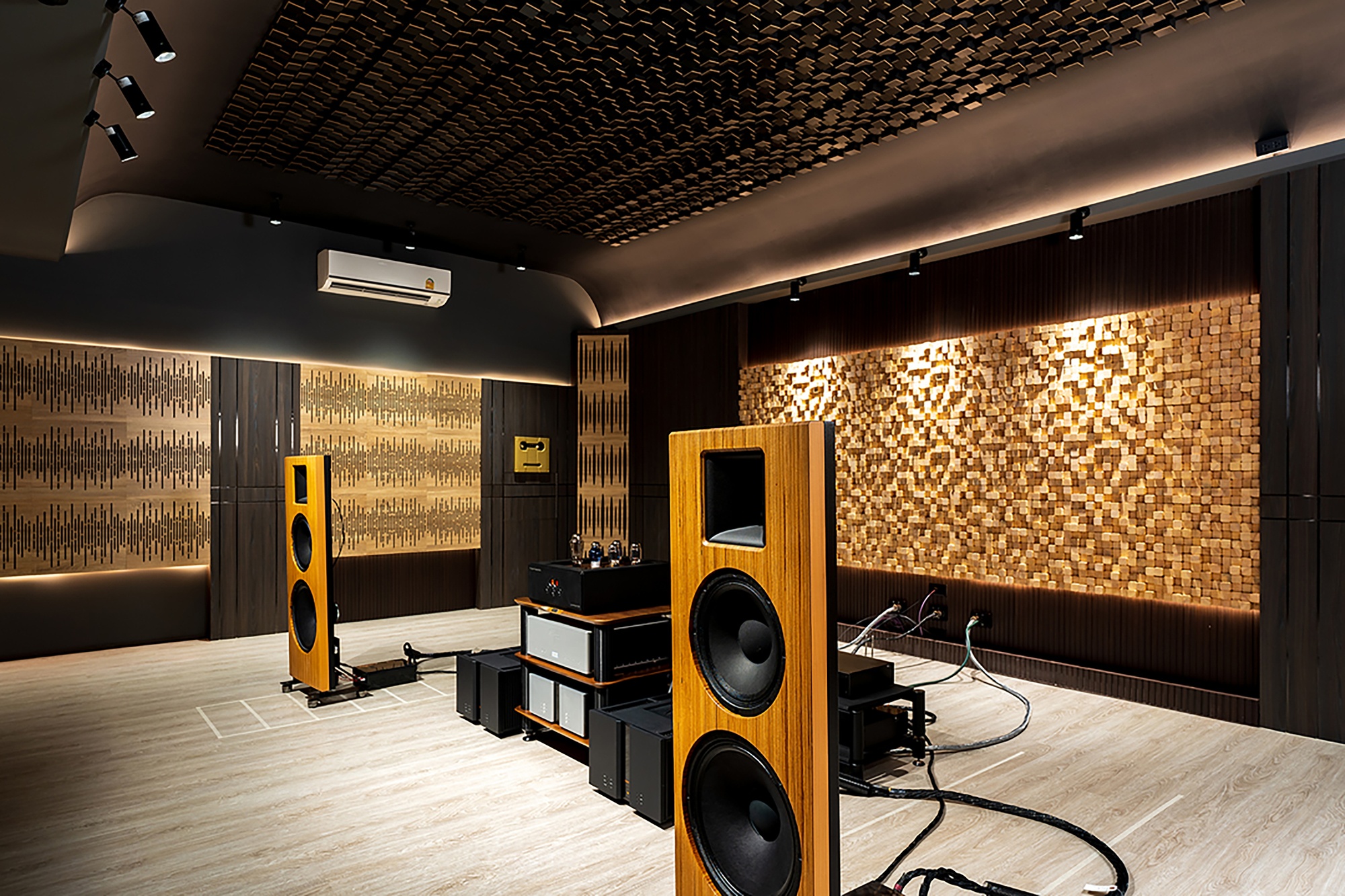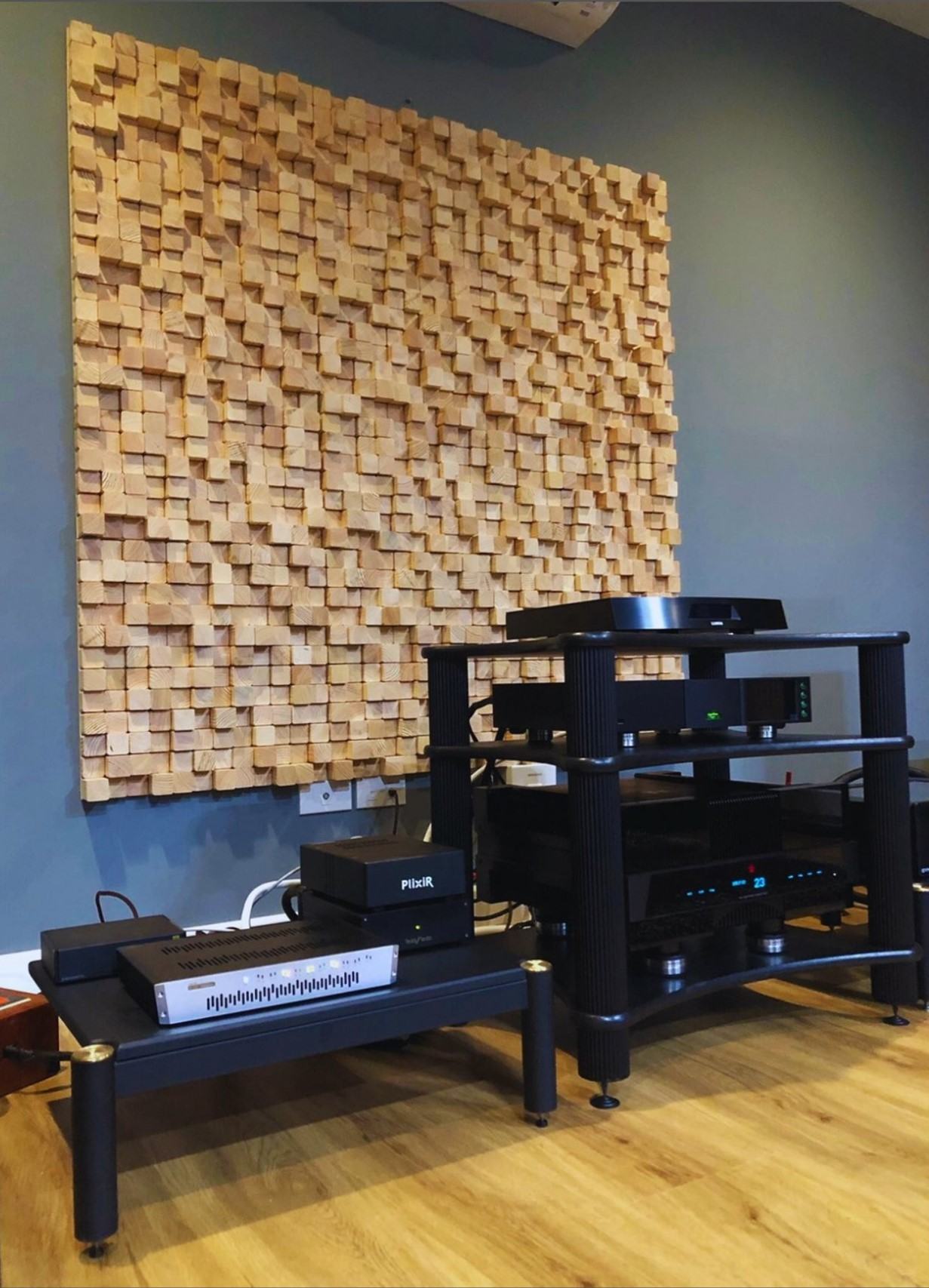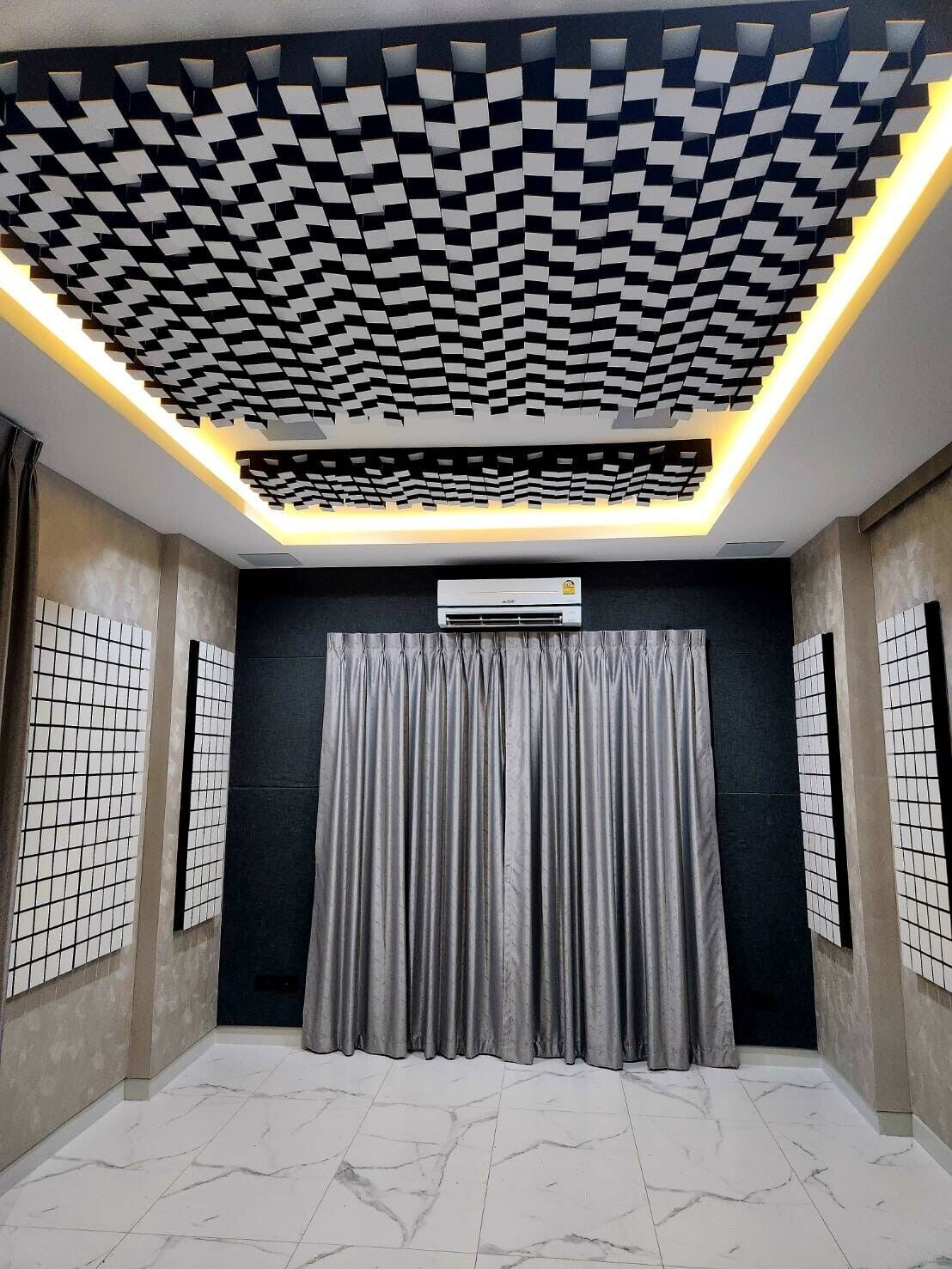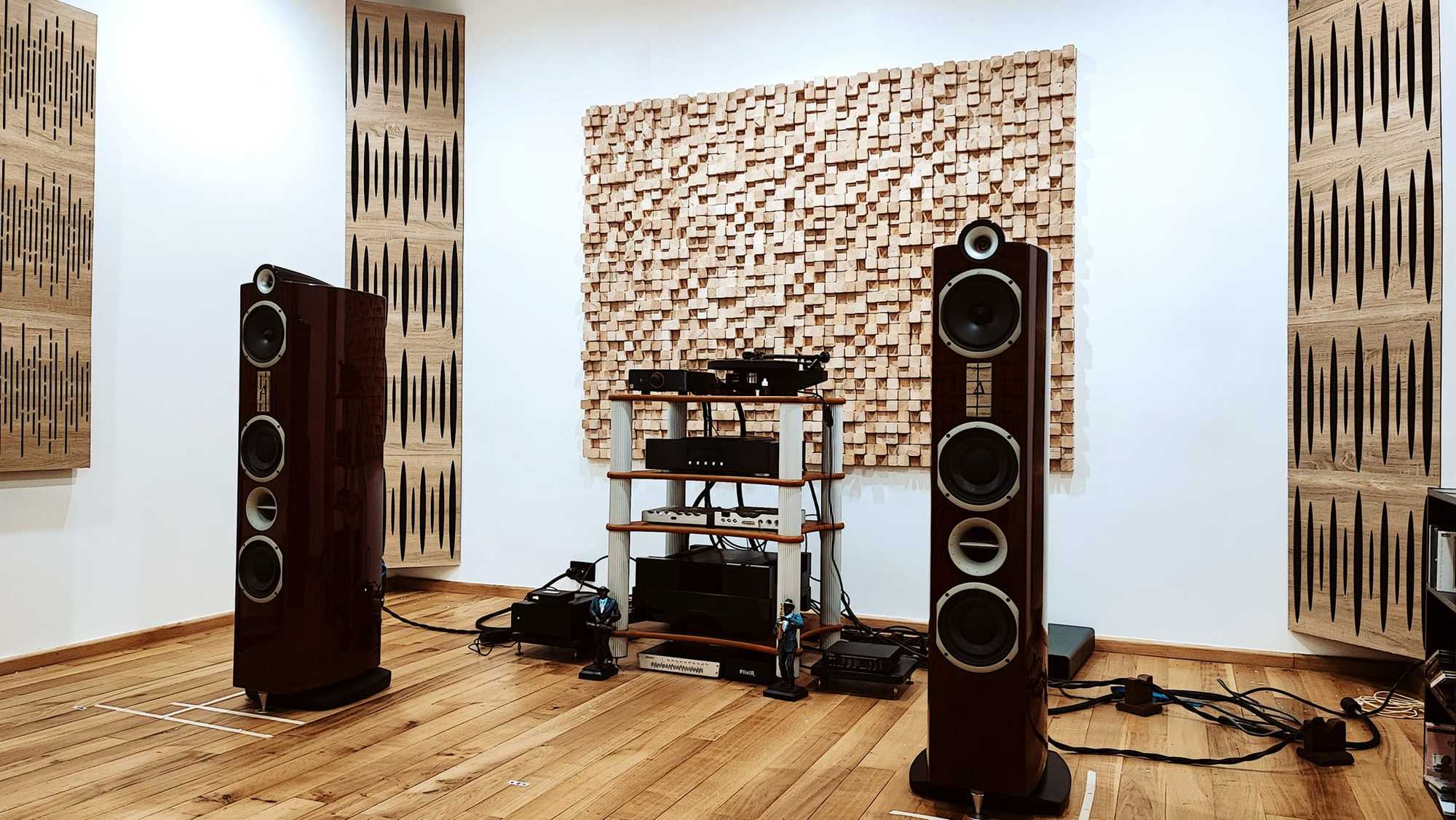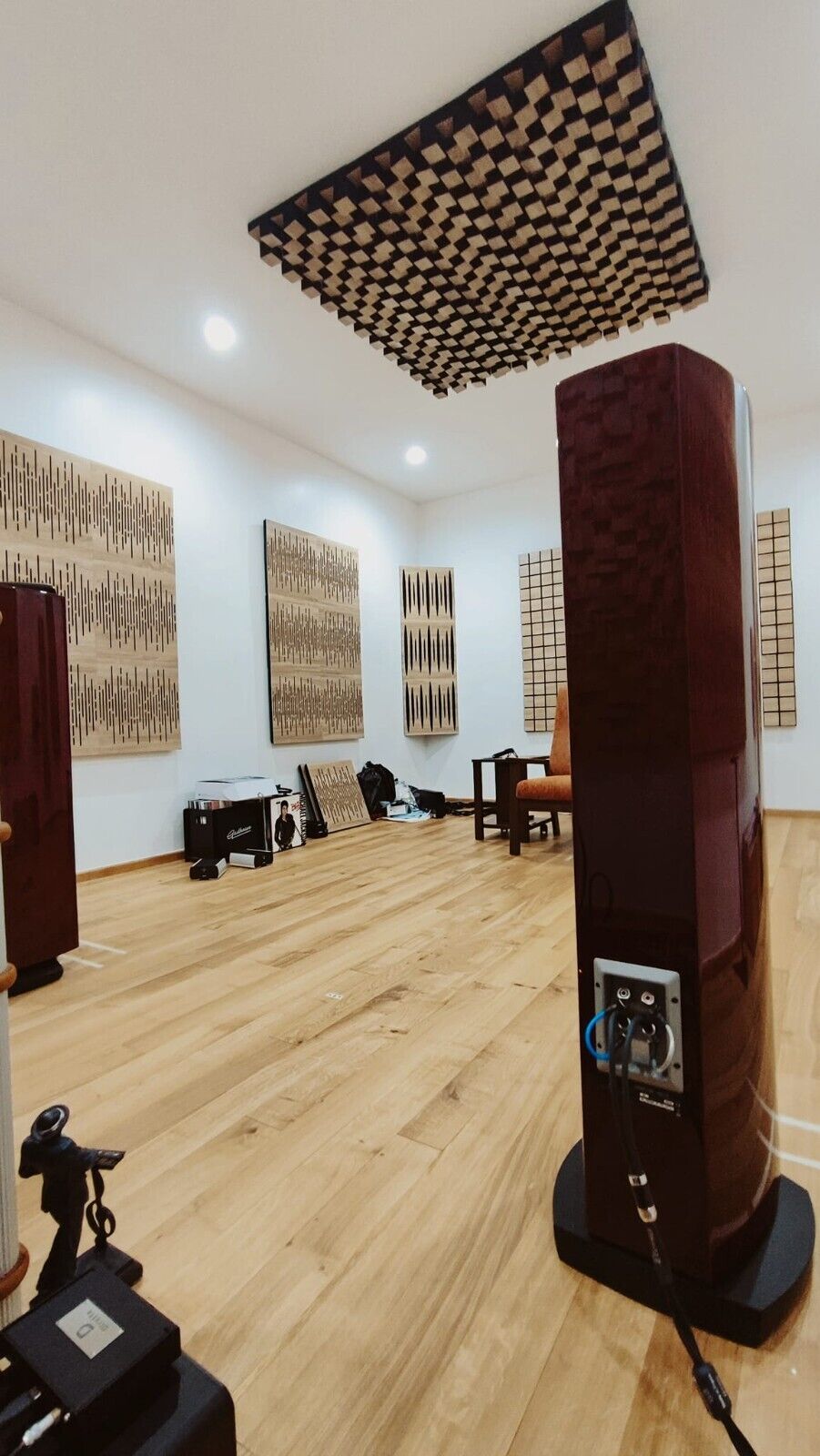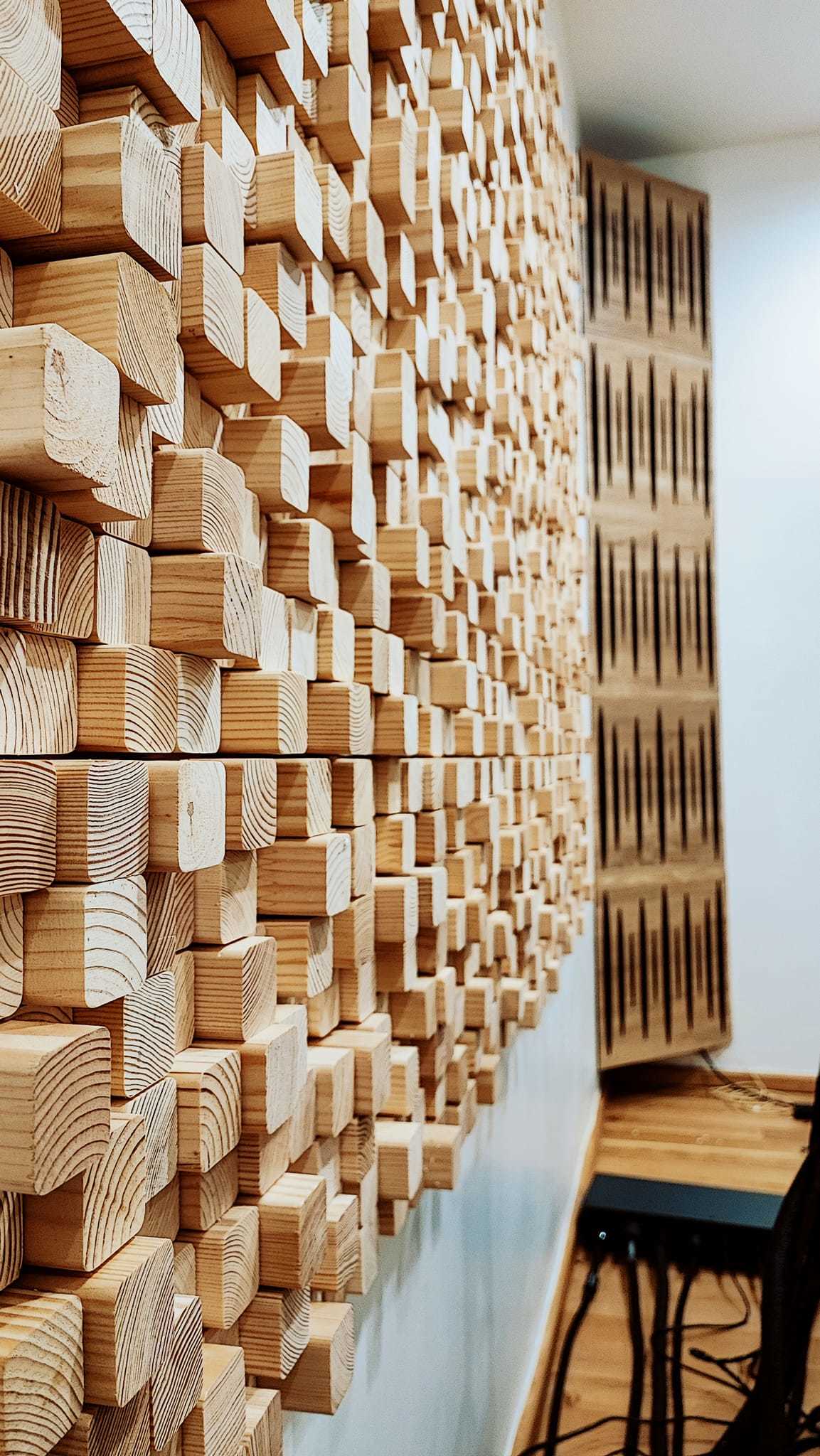Sound diffusers vs. sound absorbers – How can they be best combined?
Creating optimal acoustics in a room requires a careful balance between sound absorption and sound diffusion. Sound absorbers alone can lead to an overly muted and lifeless sound image, while sound diffusers alone can cause the sound to bounce around too much and create unbalanced room acoustics. By combining these acoustic elements in the right way, you can achieve a natural and controlled sound environment where the sound is distributed in a balanced way without unwanted reflections.
How do sound absorbers and sound diffusers work together?
Sound absorbers are primarily used to dampen reverberation and control strong sound reflections. They capture sound waves and reduce unwanted energy in the room, creating a cleaner and more focused sound image. Sound diffusers, on the other hand, spread the sound evenly by breaking up the sound waves and reflecting them in different directions, which preserves the space and clarity of the sound without creating harsh reflections. The best method for combining sound absorbers and sound diffusers depends on the room's use and acoustic properties. One of the most common strategies is to place absorbers at the first reflection points, where the sound bounces directly from the speakers or sound sources, and use sound diffusers on the back wall or ceiling to preserve a natural sound.
Strategic placement of sound absorbers and sound diffusers
Side walls – absorb the first reflections
At the first reflection points, usually on the side walls of the room, sound absorbers should be placed to minimize early reflections. This creates a cleaner sound image and prevents the sound from bouncing directly back to the listening position, which can cause phase problems and affect the clarity of the sound.
Rear wall – diffuse the sound with diffusers
The rear wall is one of the most important places to treat to prevent sound waves from bouncing straight back and creating standing waves. Placing sound diffusers here spreads the sound evenly throughout the room, providing a natural reverberation and a more dynamic sound image.
The ceiling – combine absorbers and diffusers
Ceiling reflections can significantly affect room acoustics. In certain environments, such as studios or listening rooms, it can be beneficial to combine ceiling absorbers and sound diffusers. Sound absorbers can be mounted above the listening position to reduce unwanted reverberation, while diffusers can be placed further back on the ceiling to maintain a lively space in the sound image.
Corners – manage low frequencies with bass traps
The corners of a room are critical for managing low-frequency sounds, which tend to be amplified there. Bass traps are often used in combination with sound absorbers and diffusers to dampen uneven resonances and create a more balanced sound image.
Around speakers and listening position – create balance
To achieve an accurate and balanced sound image, diffusers can also be placed behind or next to the speakers. This helps to spread the sound more evenly and avoid focused reflections that can create an imbalance in the sound experience.
Why is balance important?
A room with too many sound absorbers can feel overly dampened, causing the sound to lose energy and clarity. This can make conversations or music sound unnatural and muffled. On the other hand, a room without sufficient absorption can become overly reflective, making the sound seem chaotic and difficult to listen to. By finding the right combination of absorbers and diffusers, you can create room acoustics where the sound is both controlled and lively. Sound absorbers ensure that the reverberation is kept at an optimal level, while sound diffusers create space and naturalness in the sound image.
Summary – the best combination for your room
To optimize the acoustics, absorbers should be placed at the first reflection points on the side walls to reduce disturbing reflections. Sound diffusers are best used on the back wall and ceiling to spread the sound and prevent the room from feeling confined. Bass traps in the corners help control low-frequency sounds, and placing diffusers around the speakers can make the sound image even more natural and detailed. Creating an acoustically balanced environment is about combining these elements in a way that suits the room's needs and use. Whether it's a recording studio, a home theater, or a conference room, a well-thought-out combination of sound absorption and sound diffusion is the key to an optimal sound experience.





